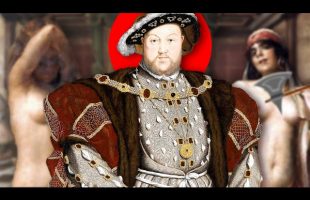Pioneering motion picture circa 1883 brought to life in 4K color at 60fps.Before the invention of film, Eadweard Muybridge captured time in motion of a young couple dancing, using sequential photography.
Five years before the “Roundhay Garden Scene” (1888) was filmed on early paper-based photographic film by Louis Le Prince and 12 years before the Lumiere brothers “Arrival of a Train at La Ciotat (1886) Eadweard Muybridge created this time in motion sequence of a young couple dancing using 24 cameras.
Man and Woman dancing a Waltz ( Plate 197) possibly features a Blanche Epler. The man’s name is unknown. Muybridge began human studies between 1882 and expanded his project at the University of Pennsylvania, who built him an outdoor studio in 1884. Part of a ground-breaking project “Animal Locomotion”, Muybridge’s project began with “Horse in Motion” in 1878 and was finally completed between 1884 and 1885 at a purpose built studio funded by Penn University.
During his exhibitions, audiences did not see the actual photographs in motion. Instead Eadweard Muybridge had artists trace the outlines of figures from the photographs onto circular glass discs. These were then hand-painted and then projected via Muybridge’s Zoopraxiscope. It was the first motion picture projector inspired from the zoetrope. His innovations formed the foundations of early cinema and animation. More than a century later his ‘time slice’ photography eventually would reach our screens in The Matrix (1999)
How silent footage is colorized and brought to Life
I take early fragments of silent 16fps footage and restore them to life by a combination of manual frame by frame colorization as well as the use of deep exemplar-based video colorization techniques. The footage is upscaled and the frames interpolated to a higher frame rate ( in most cases 60 frames per second.) Finally I produce a soundtrack which helps build a new immersive experience for the viewer.
Together, these processes revive old fragments of footage, offering audiences a more
vivid and engaging glimpse of lives long since lived in the distant past.
The colorization process used Deep exemplar-based Video colorization.
https://arxiv.org/abs/1906.09909
Support my channel while treating yourself to some magically restored downloadable vintage makeup and hairstyling books from the 1920s to the 1960s – direct to your device : https://vintagemakeupguide.com/
Timeline of Motion Pictures
Eadweard Muybridge creates Animal Locomotion 1878-1884 using 24 cameras in fixed positions. The final collection features 781 photographic plates.
In 1882 Etienne-Jules Marey invented the chronophotographic gun, a camera which took 7 photos per second of a moving object. He too captures animals and humans in motion.
In 1888 Louis le Prince films the Roundhay Garden Scene, using the first film camera – a 16-lens device called the ‘stereopticon’
In 1890 Thomas Edison and William Dickson unveil the Kinetograph, the first motion picture camera. In 1892 they reveal the Kinestoscope, a machine that could project the moving images onto a screen ( inspired incidentally by Muybridge’s Zoopraxiscope)
In 1889 Eastman-Kodak introduce flexible celluloid film would finally become the standard medium to capture both still and moving images
1895 the Lumiere Brothers premier 10 films made with their Cinematograph. A machine inspired by all the preceding inventions.
They both filmed and projected much longer films which stunned Belle Epoch Paris.
A Man and Woman Dancing a Waltz (Plate 197 1883)
Animals in Locomotion. Published in 1887
Volume 7 Males & Females ( Draped)
Technique: Chronophotography, burst mode
Artist/Photograph: Eadweard Muybridge
Editor: Eadweard Muybridge
Publisher: Chapman & Hall, LD (London)
Pictures taken between 1882 and 1886.
Music: Reflective Piano Waltz by Marco Zannone. Licensed to Glamourdaze by Pond5 Music



